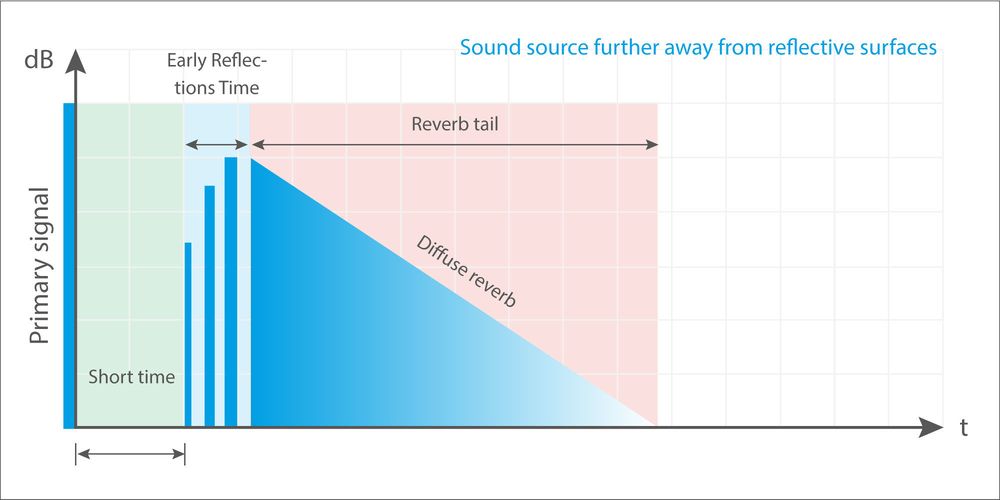5. Reverb and Delay
Reverb and delay effects are great tools for adding spatial depth to audio signals. They enrich the original signal with additional, time-delayed components. Multieffect devices often come with standard types of reverbs, including emulations of real spaces like plate reverb, spring reverb, room reverb, or cathedral reverb.
Delays play back audio signals with a time delay, creating an artificial echo that adds a similar sense of depth as reverb. What sets delays apart is their feedback function, which feeds the delayed signal back into the input, allowing for the creation of a dense soundscape from delayed components.

A reverb effect can be individually adjusted using various parameters.

These include pre-delay, early reflections time, and reverb time.
For those who want to fine-tune reverb effects, it's essential to have control over parameters like pre-delay, early reflections time, and reverb time. Pre-delay determines the time it takes for the first reflections of a sound event to become audible in a real space. The phase where a reverb effect decays is known as the "reverb tail," and its duration can be adjusted with the reverb time parameter. Reverb and delay effects often come with built-in EQs that allow you to attenuate low and/or high frequencies. This is particularly useful for preventing excessive bass build-up or harsh high frequencies. To precisely synchronize delay effects with the tempo of a song, having a sync function is crucial. It ensures that the delayed copies of the signal match the song's tempo.
This shows that even the most straightforward sound effects have a multitude of options for those who pay attention to the details.



